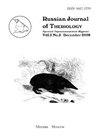Possible relations between reproduction of the yellow-necked mouse (Sylvaemus flavicollis) and oak yield
IF 0.6
4区 生物学
Q4 ZOOLOGY
引用次数: 2
Abstract
Some species of mammals can reproduce in anticipation of future food abundance. During 2017–2018 we studied the reproduction of a common abundant species, the yellow-necked mouse Sylvaemus flavicollis, in oak communities to determine if the timing of reproduction has a predictive character during the autumn peak of reproduction. During the maturation of acorns the proportion of females in oestrus gradually decreased along with the share of males with reproductive activity. By the time the acorns were completely ripe and fell, the most of juveniles became independent, and a portion of the young females became sexually mature. In 2018, a high yield oak year, the sexual activity of the males was considerably higher than that in 2017, a moderate yield oak year, what can point on its role in the regulation of the intensity of reproduction. Thus, instead of any prediction, mating and pregnancy in a large proportion of the mice, began at the beginning of acorn ripening, due to females feeding on immature seeds, eliminating a delay between forage yield and rodent reproduction. A possible reason for this synchronization is the contents of triacylglycerols, the main constituents of body fat in animals, in the rodent diet. During the maturation of acorns, its proportion increases considerably, which can increase the survival rate of juveniles. How to cite this article: Vekhnik V.A., Vekhnik V.P., Rozentsvet O.A., Bogdanova E.S. 2019. Possible relations between reproduction of the yellow-necked mouse (Sylvaemus flavicollis) and oak yield //Russian J. Theriol. Vol.18. No.1. P.33–42. doi: 10.15298/rusjtheriol.18.1.04.黄颈鼠繁殖和橡树产量的可能关系
一些哺乳动物可以在未来食物丰富的情况下繁殖。2017年至2018年,我们研究了一种常见的丰富物种——黄颈鼠Sylvaemus flavicollis在橡树群落中的繁殖,以确定繁殖时间是否具有秋季繁殖高峰期的预测特征。在橡子成熟过程中,处于发情期的雌性比例随着具有生殖活动的雄性比例逐渐下降。当橡子完全成熟并落下时,大多数幼子变得独立,一部分年轻的雌性变得性成熟。2018年是高产橡树年,雄性的性活动显著高于2017年,2017年是中等产量橡树年,这可以说明它在调节繁殖强度方面的作用。因此,与任何预测不同,由于雌性以未成熟种子为食,大部分小鼠的交配和怀孕始于橡子成熟之初,从而消除了饲料产量和啮齿动物繁殖之间的延迟。这种同步的一个可能原因是啮齿动物饮食中三酰甘油的含量,三酰甘油是动物体内脂肪的主要成分。在橡子成熟过程中,其比例显著增加,这可以提高幼子的存活率。如何引用这篇文章:Vekhnik V.A.,VekhnikV.P.,Rozentsvet O.A.,Bogdanova E.S.2019。黄颈鼠(Sylvaemus flavicollis)的繁殖与橡树产量之间的可能关系//俄罗斯J.Theriol。第18卷第1期。P.33-42.doi:10.15298/rusjtheriol.8.1.04。
本文章由计算机程序翻译,如有差异,请以英文原文为准。
求助全文
约1分钟内获得全文
求助全文
来源期刊

Russian Journal of Theriology
Agricultural and Biological Sciences-Animal Science and Zoology
CiteScore
0.90
自引率
33.30%
发文量
0
期刊介绍:
The Russian Journal of Theriology publishes papers on all aspects of mammalian biology: taxonomy, zoogeography, ecology, behavior, morphology, development, physiology, paleontology, and evolution. Studies of extinct as well as extant taxa are included. Reviews are also published; these may be invited by the Editorial Board.
 求助内容:
求助内容: 应助结果提醒方式:
应助结果提醒方式:


